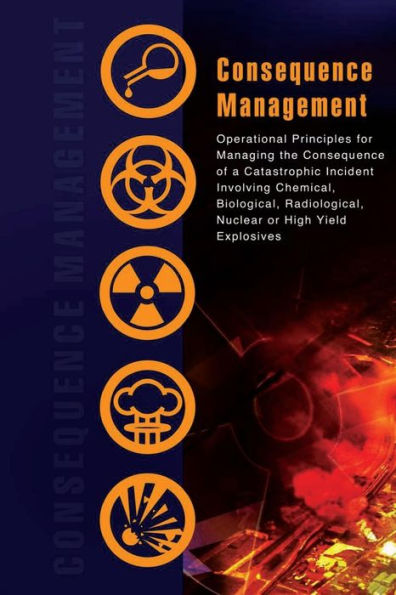To assist with a catastrophic mass casualty incident in the United States and its territories - at the direction of the President - the Chairman of the Joint Chiefs of Staff or the appropriate Combatant Commander may deploy the CBRNE Consequence Management Response Force (CCMRF). The CCMRF is trained and equipped to provide a rapid response capability following a catastrophic event. Just as with all instances of Defense Support of Civil Authorities (DSCA), military forces respond only when requested. Requests always work their way up from the local level. After a major incident, city leaders will ask for county assistance; county asks for State assistance; the State Governor asks for Federal assistance from the President. If the President agrees, a Presidential Declaration of Disaster is declared. The Secretaries of Homeland Security, Defense, and other cabinet members meet and determine the best course of action. The SecDef may initiate activation of CCMRF units. State National Guard units are usually mobilized under the direction of the Governor and remain State assets, while CCMRF units are usually Title 10 under the direction of NORTHCOM, ARNORTH, and the Joint Task Force (JTF) Commander - or the Defense Coordinating Officer (DCO) if a JTF is not stood up. The CCMRF includes assets such as medical surge, chemical decontamination and biological detection that may be helpful to the victims of a catastrophic event. The CCMRF also includes communications, force protection, transportation, supply and maintenance assets that can be used to establish command and control capabilities to facilitate additional military and civilian resources into the affected area. Joint Doctrine for Civil Support notes, "DOD resources are normally used only when state and local resources are overwhelmed and/or non-DOD resources of the Federal government are insufficient or unable to meet the requirements of local and state civil authorities." This workbook focuses on domestic consequence management under the command of USNORTHCOM. The CCMRF mission is part of a broader Department of Defense (DOD) support package to the Lead Federal Agency (LFA), which is responsible for overall coordination of the response. The primary agency is responsible for overall coordination of the response. In many cases the primary agency is FEMA, but not always. In the case of many other emergencies the state government retains legal and operational leadership. Often, for these incidents, there is no need to establish a Joint Task Force, and the Defense Coordinating Officer remains the single point of contact for DoD. Other Federal agencies may also support the response - for example, the FBI may assist in collecting evidence - but the primary responsibility remains at the State or local level. There is also likely to be significant involvement in emergency response by local authorities, private organizations, and individual citizens. The legal, political, and operational implications can be complex. When the CCMRF is deployed, the event has overwhelmed local resources. If the event is perceived as having terrorist origins, the level of public concern will be especially high. Public concern, legal limitations, and the need to collaborate with a wide range of other players establish a challenging strategic context.



